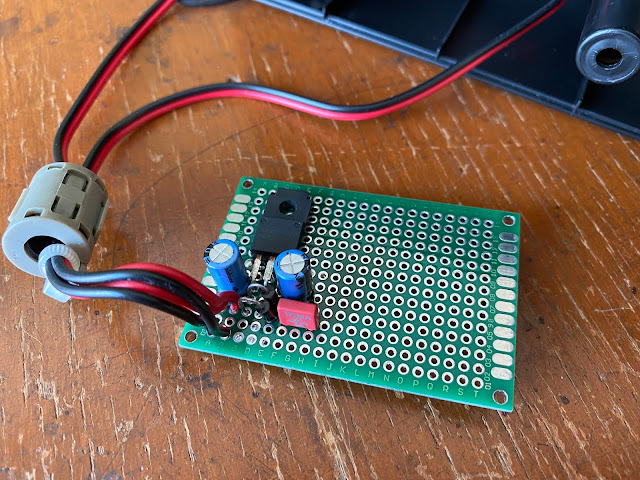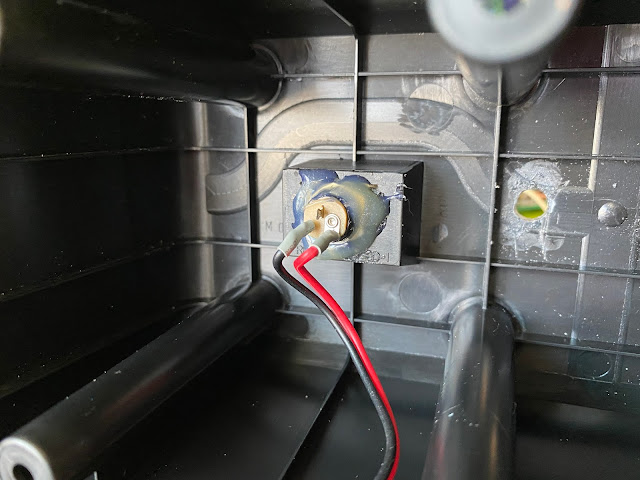I am quite reluctant to build such a mediocre audio system, such as the Bluetooth speakers system like in this post. I prefer buying a finished product like the Xiaomi Bluetooth Speaker that cost around US$20. I had it once very long time ago and it sound quite okay for a small speaker. At that time I did not use it quite often so I better sell it anyway.
Fast forward today, in my daily listening experience, I have good stereo audio system in my house and this system serve me very well. Listening the music with this audio system still a breath-taking experience for me.
Then, I am in a long holiday now, starting from this day to next week. And because we are still in this pandemic situation, so me and my family planning to create a small staycation at our house. I prepare mini pool for my kids, it is 3 meter by 2 meter balloon pool, while me and my wife will enjoying the nice afternoon with some bread and coffee.
So, for more rewarding experience, I need an outdoor Bluetooth speakers, connected to my Apple Music Player on my smartphone. Although the sound quality will not become the first priority, this Bluetooth speakers should capable to deliver the sound fuller and louder, but still enjoyable to hear.
To make it simple, the power source for this Bluetooth speaker could be using external 12 volt batteries or wall wart DC adaptor. It should be very efficient that it can play music all day long and the most important things when building this Bluetooth speaker should be cheap and simple.
I have the unused speaker. This speaker is become a testing speaker for my DIY project in quite some time. It is a center speaker from the mini home theater system. I got it as a gift from my friend very long time ago.
This center speaker size is about 20 cm x 10 cm with depth about 12 cm. Not too small but not big either. I think this would be the right size for my Bluetooth speaker project. The speaker driver is dual 3 inch full-range woofer. The original configuration is mono, paired in parallel. In this project I will make them separately and become stereo. It sound quite good when I did testing on my other audio project.
You can use any unused speaker you had right now for this project as well.
I am using small PAM8610 stereo amplifier module. Surprisingly the size is perfectly fit in the center of both speaker driver. I attach the speaker cables for each driver then glue it to the board. I also put small capacitor on the DC input for better DC linearity along with the blue LED and resistor for the power ON indicator.
The PAM8610 itself is a class D amplifier rated 10 watt per channel at 0,1% distortion running at 12 volt DC. Not bad for this small size module amplifier. This amplifier module cost is less than US$1.
For the Bluetooth receiver, I am using this tiny and cheap Bluetooth receiver module which cost less than US$2. The pairing sound notice is only a tone sound rather the someone voice speak that you don't understand at all. The pairing process also simple and easy to use.
Because the PAM8610 required 12 volt and this Bluetooth module required 5 volt, then I should make a voltage regulator from thee amplifier module to this Bluetooth module.
The voltage regulator is the 7805 IC. The current is not important, anything more than 100 mA can be use here.
I also put the capacitors for both input and output pin of the IC for better regulation. I also put safety diodes as per datasheet information. All of those components are put in this universal PCB.
You can do this in more simple way by buying a DC step-down module that widely available for less than US$1 each. It will work okay in this project, just make sure the DC output to the Bluetooth module is set to 5 volt.
Later on I saw the same Bluetooth module is already include the amplifier module which in my opinion far more simple than this one.
I made few hole at the back of the speaker box. This box is made in plastic material and make a hole on it is lot easier. The photo above is for 12 volt DC input socket and I also made a hole for the potentiometer for the analog volume control.
You can eliminate this analog volume control because it can be adjust on the smartphone connected to this Bluetooth module anyway. But for me, dial the analog volume control is faster than unlock the smartphone.
Because this speaker is used, so no complain for me if there is another unused hole. This hole should be patch to avoid speaker pressure noise. In this project I am using the 6.3 mm socket to close this hole completely.
I using the pin out from the 6.3 mm socket as the low pass filter (LPF) circuit from the Bluetooth module to the potentiometer.
The Bluetooth receiver is actually a DAC with high frequency radio reception as the digital input, so naturally it will dealing with high frequency noise.
Especially for this cheap Bluetooth module, there should be lots of cutting cost everywhere, including the absence of this LPF in that module. The LPF here is a simple R-C network consist of 900pF capacitor from signal to ground and series to 2 K ohm resistor per channel.
More explanation for the LPF circuit, the resistors value are not very important, you can use from 1 k ohm up to 10 k ohm. But higher the resistors value will reduce the amplifier gain. The more sensitive speakers driver need higher resistance, while in this project, the low sensitivity speakers like I am using here is only need small resistance per channel.
The capacitors value will determined on how much high frequency are cut in the first order/octave. The higher the capacitance number, the lower frequency are only pass through the speakers. This capacitors can become the sound tuning as well. So the value are actually very depends on the speaker frequency response. You can use as low as 100 pF up to 10 nF.
If this LPF section is to complicated, then you can also ignore this circuit and just hard wired from the Bluetooth receiver module output to potentiometer directly.
This how I connect the LPF circuit to the potentiometer as the volume control.
This Bluetooth speaker project is all done.
I testing by pairing with my smartphone and it connect flawlessly. The sound is surprisingly good, very loud and clear, yet the bass is impactful consider it is only come from this dual 3 inch speakers driver. This speakers sound is for sure far better than any commercial Bluetooth speaker available and my stay-cation is just like having a large pool party sound system.
My neighbors are looking to what we are doing, but sorry you all cannot join, please stay at home:)
I tried to draw the simplify schematic based on actual components and the module for better explanation to the beginner when building the similar project like this.
I hope this instruction is all clear. Cheers.
Disclaimer: Any statement and photos in this article are not allowed to copy or publish without written permission from the writer. Any injury or loss from following tips in this article is not under writer responsibility.













Kudos to this fantastic blog for guiding me step by step in building my own outdoor bluetooth speakers for pool parties! The clear instructions made it a breeze, and now I'm enjoying great tunes by the pool. Thank you for the awesome DIY inspiration
ReplyDeleteThis comment has been removed by the author.
ReplyDelete